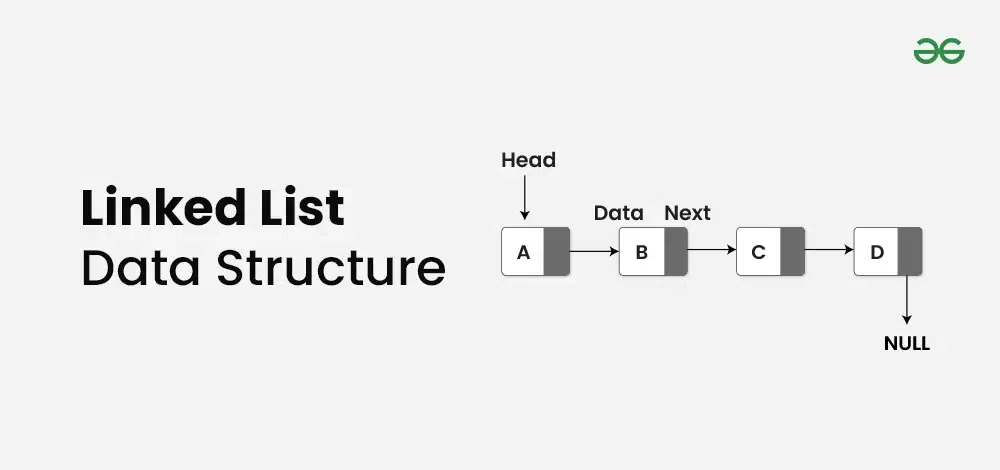【链表实战攻略】:从入门到精通,掌握链表应用与优化秘诀
发布时间: 2024-08-23 19:22:31 阅读量: 12 订阅数: 19 


# 1. 链表的基本概念和数据结构
链表是一种线性数据结构,由一组节点组成,每个节点包含数据和指向下一个节点的指针。与数组不同,链表中的节点可以在内存中位于任意位置,通过指针连接起来。
### 链表的优点
- 动态内存分配:链表可以动态分配内存,在需要时创建新节点,在不需要时释放旧节点。
- 插入和删除效率高:在链表中插入或删除一个节点只需要修改指针,而不需要移动大量数据,因此效率较高。
- 存储灵活:链表可以存储任意类型的数据,并且可以根据需要添加或删除数据项。
# 2. 链表的实现技巧
### 2.1 单链表的实现和操作
#### 2.1.1 单链表的节点结构
单链表的节点通常由两个部分组成:数据域和指针域。数据域存储节点的数据,而指针域指向下一个节点。
```c++
struct Node {
int data;
Node* next;
};
```
#### 2.1.2 单链表的插入、删除和查找
**插入**
在单链表中插入一个节点需要找到插入位置的前一个节点,然后将新节点插入到前一个节点的后面。
```c++
void insert(Node* head, int data) {
Node* newNode = new Node;
newNode->data = data;
if (head == NULL) {
head = newNode;
} else {
Node* current = head;
while (current->next != NULL) {
current = current->next;
}
current->next = newNode;
}
}
```
**删除**
删除单链表中的一个节点需要找到要删除的节点的前一个节点,然后将前一个节点的指针指向要删除节点的下一个节点,从而跳过要删除的节点。
```c++
void delete(Node* head, int data) {
if (head == NULL) {
return;
}
if (head->data == data) {
head = head->next;
return;
}
Node* current = head;
while (current->next != NULL) {
if (current->next->data == data) {
current->next = current->next->next;
return;
}
current = current->next;
}
}
```
**查找**
在单链表中查找一个节点需要遍历链表,直到找到要查找的节点或到达链表的末尾。
```c++
Node* find(Node* head, int data) {
Node* current = head;
while (current != NULL) {
if (current->data == data) {
return current;
}
current = current->next;
}
return NULL;
}
```
### 2.2 双链表的实现和操作
#### 2.2.1 双链表的节点结构
双链表的节点比单链表的节点多了一个指向前一个节点的指针域。
```c++
struct Node {
int data;
Node* next;
Node* prev;
};
```
#### 2.2.2 双链表的插入、删除和查找
**插入**
在双链表中插入一个节点需要找到插入位置的前一个节点和后一个节点,然后将新节点插入到前一个节点和后一个节点之间。
```c++
void insert(Node* head, int data) {
Node* newNode = new Node;
newNode->data = data;
if (head == NULL) {
head = newNode;
} else {
Node* current = head;
while (current->next != NULL) {
current = current->next;
}
current->next = newNode;
newNode->prev = current;
}
}
```
**删除**
删除双链表中的一个节点需要找到要删除的节点的前一个节点和后一个节点,然后将前一个节点的指针指向要删除节点的后一个节点,将后一个节点的指针指向要删除节点的前一个节点。
```c++
void delete(Node* head, int data) {
if (head == NULL) {
return;
}
if (head->data == data) {
head = head->next;
if (head != NULL) {
head->prev = NULL;
}
return;
}
Node* current = head;
while (current->next != NULL) {
if (current->next->data == data) {
current->next = current->next->next;
if (current->next != NULL) {
current->next->prev = current;
}
return;
}
current = current->next;
}
}
```
**查找**
在双链表中查找一个节点需要遍历链表,直到找到要查找的节点或到达链表的末尾。
```c++
Node* find(Node* head, int data) {
Node* current = head;
while (current != NULL) {
if (current->data == data) {
return current;
}
current = current->next;
}
return NULL;
}
```
### 2.3 循环链表的实现和操作
#### 2.3.1 循环链表的节点结构
循环链表的节点结构与单链表的节点结构相同,但循环链表的最后一个节点的指针指向链表的第一个节点,形成一个环形结构。
```c++
struct Node {
int data;
Node* next;
};
```
#### 2.3.2 循环链表的插入、删除和查找
**插入**
在循环链表中插入一个节点需要找到插入位置的前一个节点,然后将新节点插入到前一个节点的后面。
```c++
void insert(Node* head, int data) {
Node* newNode = new Node;
newNode->data = data;
if (head == NULL) {
head = newNode;
newNode->next = head;
} else {
Node* current = head;
while (current->next != head) {
current = current->next;
}
current->next = newNode;
newNode->next = head;
}
}
```
**删除**
删除循环链表中的一个节点需要找到要删除的节点的前一个节点,然后将前一个节点的指针指向要删除节点的下一个节点,从而跳过要删除的节点。
```c++
void delete(Node* head, int data) {
if (head == NULL) {
return;
}
if (head->data == data) {
if (head->next == head) {
head = NULL;
} else {
Node* current = head;
while (current->next != head) {
current = current->next;
}
current->next = head->next;
head = head->next;
}
return;
}
Node* current = head;
while (current->next != head) {
if (current->next->data == data) {
current->next = current->next->next;
return;
}
current = current->next;
}
}
```
**查找**
在循环链表中查找一个节点需要遍历链表,直到找到要查找的节点或到达链表的起始点。
```c++
Node* find(Node* head, int data) {
Node* current = head;
while (current != NULL) {
if (current->data == data) {
return current;
}
current = current->next;
if (current == head) {
return NULL;
}
}
return NULL;
}
```
# 3. 链表的实战应用
### 3.1 链表在数据结构中的应用
链表在数据结构中有着广泛的应用,因为它提供了高效的插入、删除和查找操作。
#### 3.1.1 栈和队列的实现
栈和队列是两种基本的数据结构,它们可以利用链表轻松实现。
**栈**是一种后进先出(LIFO)的数据结构。使用链表实现栈时,可以将链表的头部作为栈顶。插入元素时,将新元素添加到链表的头部;删除元素时,从链表的头部删除元素。
**队列**是一种先进先出(FIFO)的数据结构。使用链表实现队列时,可以将链表的头部作为队列的队首,将链表的尾部作为队列的队尾。插入元素时,将新元素添加到链表的尾部;删除元素时,从链表的头部删除元素。
#### 3.1.2 哈希表的实现
哈希表是一种快速查找数据的结构。使用链表实现哈希表时,可以将哈希表中的每个桶表示为一个链表。当插入元素时,将元素添加到与该元素的哈希值对应的链表中。当查找元素时,从与该元素的哈希值对应的链表中查找元素。
### 3.2 链表在算法中的应用
链表在算法中也有着广泛的应用,因为它提供了高效的遍历和搜索操作。
#### 3.2.1 排序算法(归并排序、快速排序)
归并排序和快速排序是两种经典的排序算法,它们都可以使用链表实现。
**归并排序**通过将链表分成两半,对每一半进行排序,然后合并两个已排序的链表来实现排序。
**快速排序**通过选择一个枢轴元素,将链表分成两部分,一部分包含比枢轴元素小的元素,另一部分包含比枢轴元素大的元素,然后递归地对两部分进行排序。
#### 3.2.2 搜索算法(深度优先搜索、广度优先搜索)
深度优先搜索和广度优先搜索是两种经典的搜索算法,它们都可以使用链表实现。
**深度优先搜索**通过递归遍历链表中的每个节点,并对每个节点的子节点进行深度优先搜索。
**广度优先搜索**通过将链表中的节点存储在一个队列中,然后依次从队列中取出节点并对其子节点进行广度优先搜索。
# 4. 链表的优化秘诀
### 4.1 链表的内存管理和垃圾回收
#### 4.1.1 引用计数法
引用计数法是一种简单的内存管理技术,用于跟踪指向特定对象的引用数量。每个对象都有一个引用计数器,它记录了指向该对象的引用数。当对象不再被引用时,其引用计数器将降为 0,并且该对象将被垃圾回收器回收。
**优点:**
- 实现简单,开销低。
- 可以立即释放不再使用的对象。
**缺点:**
- 无法处理循环引用。
- 引用计数器需要额外的内存空间。
#### 4.1.2 标记清除法
标记清除法是一种更复杂但更有效的内存管理技术。它分两个阶段进行:
**标记阶段:**
- 从根对象(例如全局变量)开始,递归遍历所有可达对象。
- 将可达对象标记为 "已标记"。
**清除阶段:**
- 遍历所有对象,回收未标记的对象。
**优点:**
- 可以处理循环引用。
- 不需要额外的内存空间。
**缺点:**
- 标记阶段可能会很耗时。
- 清除阶段可能会导致内存碎片。
### 4.2 链表的性能优化
#### 4.2.1 时间复杂度分析
链表的插入、删除和查找操作的时间复杂度取决于链表的长度。对于一个长度为 n 的链表,这些操作的时间复杂度为 O(n)。
#### 4.2.2 空间复杂度分析
链表的每个节点都存储了数据和指向下一个节点的指针,因此链表的空间复杂度为 O(n)。
### 优化技巧
**减少内存分配:**
- 使用对象池来重用对象。
- 避免频繁创建和销毁对象。
**减少指针追逐:**
- 使用尾指针来快速访问链表的尾部。
- 使用双链表或循环链表来减少指针追逐。
**提高缓存命中率:**
- 将链表存储在连续的内存块中。
- 使用链表节点大小对齐来提高缓存命中率。
**代码示例:**
```python
# 使用对象池来重用链表节点
class NodePool:
def __init__(self):
self.pool = []
def get_node(self):
if self.pool:
return self.pool.pop()
else:
return Node()
def return_node(self, node):
self.pool.append(node)
# 使用尾指针来快速访问链表的尾部
class LinkedList:
def __init__(self):
self.head = None
self.tail = None
def append(self, data):
new_node = NodePool().get_node()
new_node.data = data
if self.head is None:
self.head = new_node
self.tail = new_node
else:
self.tail.next = new_node
self.tail = new_node
```
**逻辑分析:**
- `NodePool` 类使用对象池来重用链表节点,从而减少内存分配。
- `LinkedList` 类使用尾指针来快速访问链表的尾部,从而减少指针追逐。
**参数说明:**
- `NodePool.get_node()`:从对象池中获取一个链表节点。
- `NodePool.return_node()`:将链表节点返回到对象池。
- `LinkedList.append()`:向链表中追加一个数据项。
# 5.1 链表在并发编程中的应用
### 5.1.1 无锁链表
在多线程环境中,传统的链表操作容易产生竞争和死锁问题。无锁链表通过消除锁机制,提高并发性能。
#### 实现原理
无锁链表使用原子操作来更新链表节点,避免使用锁。原子操作保证操作的原子性,即要么成功执行,要么完全不执行,不会产生中间状态。
#### 常见实现
* **CAS(Compare-And-Swap)操作:**用于原子地更新节点指针。如果节点指针与预期值相等,则执行更新操作,否则失败。
* **ABA 问题:**CAS 操作无法区分节点指针的两次更新,可能导致 ABA 问题。解决方法是使用版本号或时间戳来标记节点。
### 5.1.2 复制链表
复制链表是一种并发链表,通过创建链表的多个副本来提高并发性。
#### 实现原理
* **创建多个链表副本:**每个线程维护一个链表副本。
* **局部修改:**线程只修改自己的链表副本。
* **合并修改:**当线程需要访问其他线程的链表副本时,将自己的副本与其他副本合并。
#### 优点
* **高并发性:**由于线程修改自己的副本,避免了锁竞争。
* **可扩展性:**随着线程数量的增加,并发性能线性提升。
#### 缺点
* **空间开销:**每个线程维护一份链表副本,增加了空间开销。
* **合并开销:**合并链表副本会带来额外的开销。
0
0





